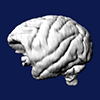-
-
sample data

|
-
-
-
sample data

|
-
sample publication

|
|
Anatomy and physiology of the primate interstitial nucleus of Cajal I. efferent projections.
J Neurophysiol. 1996 Feb;75(2):725-39. Kokkoroyannis T, Scudder CA, Balaban CD, Highstein SM, Moschovakis AK
1. The efferent projections of the interstitial nucleus of Cajal (NIC) were studied in the squirrel monkey after iontophoretic injections of biocytin and Phaseolus Vulgaris leucoagglutinin into the NIC. To ensure the proper placement of the tracer, the same pipettes were used to extracellularly record the discharge pattern of NIC neurons. 2. Three projection systems of the NIC were distinguished: commissural (through the posterior commissure), descending, and ascending. 3. The posterior commissure system gave rise to dense terminal fields in the contralateral NIC, the oculomotor nucleus, and the trochlear nucleus. 4. The descending system of NIC projections deployed dense terminal fields in the ipsilateral gigantocellular reticular formation and the paramedian reticular formation of the pons, as well as in the ventromedial and commissural nuclei of the first two spinal cervical segments. It also gave rise to moderate or weak terminal fields in the vestibular complex, the nucleus prepositus hypoglossi, the inferior olive, and the magnocellular reticular formation, as well as cell groups scattered along the paramedian tracts in the pons and the pontine and medullary raphe. 5. The ascending system of NIC projections gave rise to dense terminal fields in the ipsilateral mesencephalic reticular formation and the zona incerta as well as moderate or weak terminal fields in the ipsilateral centromedian and parafascicular thalamic nuclei. It also provided dense bilateral labeling of the rostral interstitial nucleus of the medial longitudinal fasciculus and the fields of Forel, and moderate or weak bilateral labeling of the mediodorsal, central medial, and central lateral nuclei of the thalamus. 6. Models of saccade generation that rely on feedback from the velocity-to-position integrators and include the superior colliculus in their local feedback loop are contradicted because no fibers originating from the NIC traveled to the superior colliculus to deploy terminal fields. 7. Consistent with its morphological and functional diversity, these data indicate that the primate NIC sends signals to a multitude of targets implicated in the control of eye and head movements.
Neuroanatomical Connectivity References
|
|

